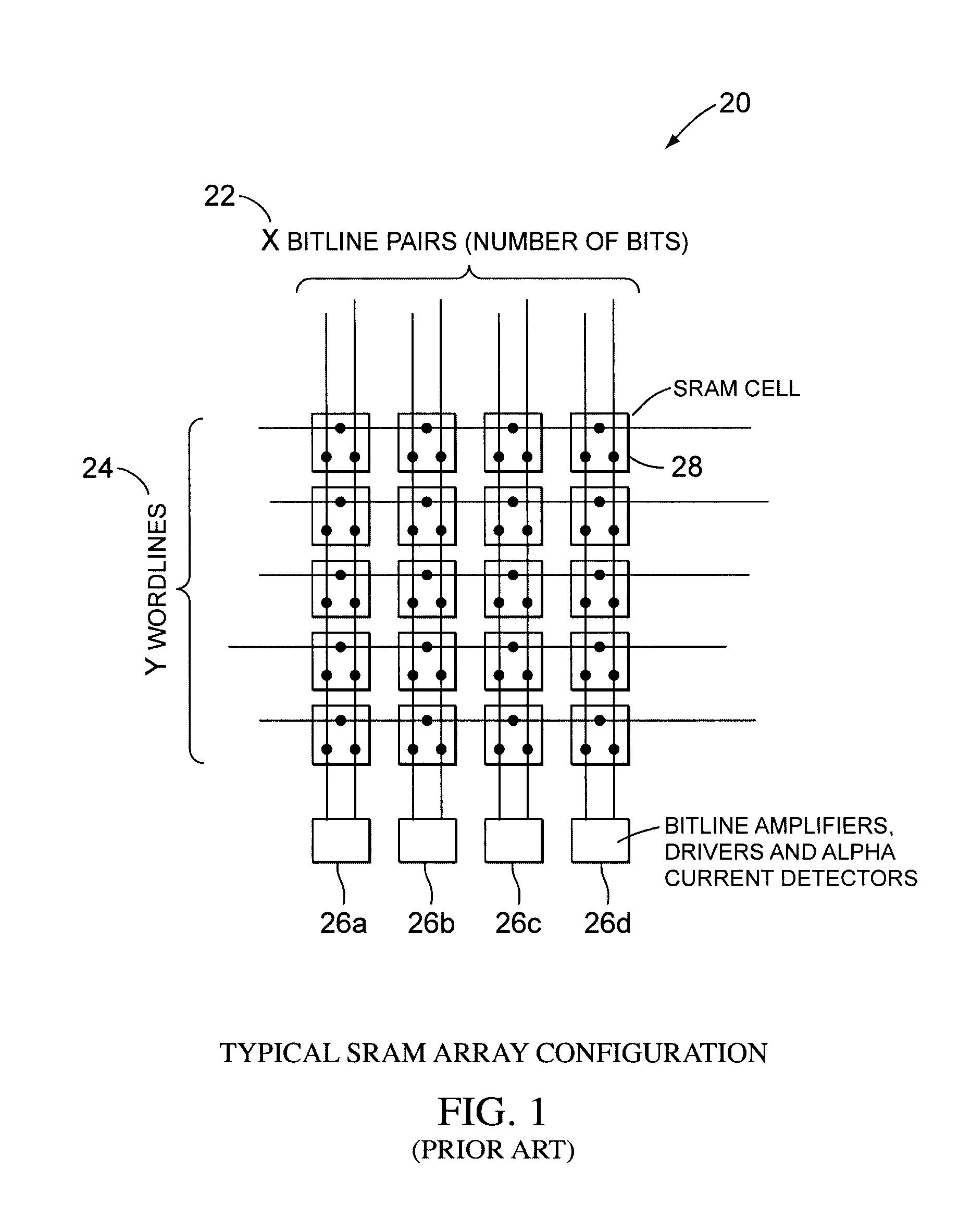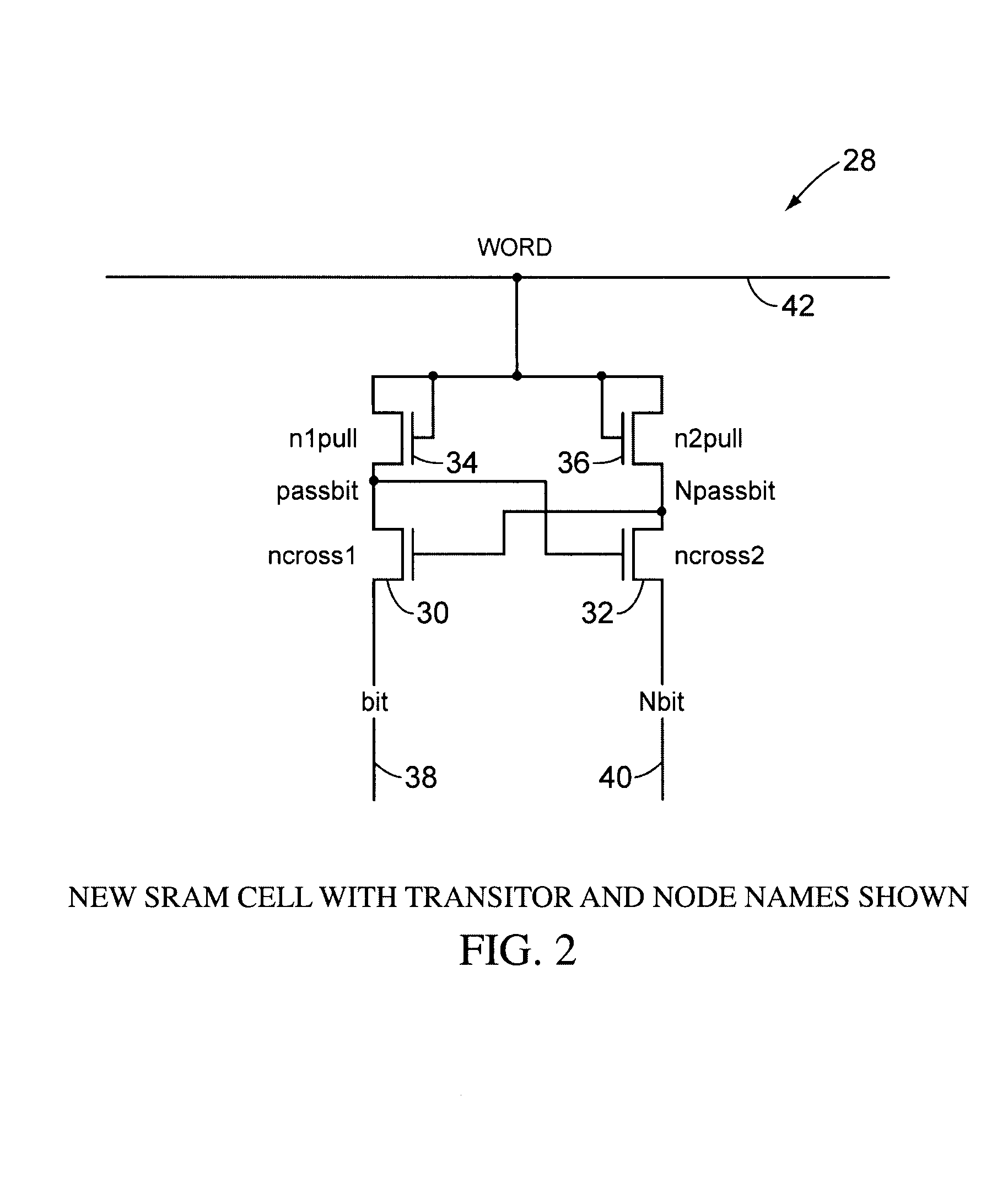SRAM circuitry
a sram cell, low-power technology, applied in the direction of information storage, static storage, digital storage, etc., can solve the problems of large amount of power wasted, sub-threshold leakage, and increasing leakage current in sub-100 nanometer (nm) vlsi devices, and achieve fast “all nmos" and low leakage current
- Summary
- Abstract
- Description
- Claims
- Application Information
AI Technical Summary
Benefits of technology
Problems solved by technology
Method used
Image
Examples
Embodiment Construction
Array Blocks
[0022]Arrays 20 are built up in the X direction 22 to make the memory wider, and in the Y direction 24 by adding more wordlines. The bitlines 22 are commoned. An array 20 of SRAM cell shown in FIG. 1 together with the Wordline drivers and the bitline amplifiers 26a–d completes an X*Y array 20.
Multiple Blocks
[0023]Multiple array blocks would ordinarily be deployed. This helps in several ways. It makes redundancy easier to implement on the array level. It makes access time faster on smaller, less capacitive arrays. The circuits in the individual blocks need only be matched to the local CMOS PVT process conditions on that part of the die. It eases matching requirements etc.
New SRAM Cell and Drive Circuits
[0024]The circuit here aims to give all the benefits associated with the above approaches but in a much simpler way with less overhead in terms of area and delay. It should be noted that the circuit is drawn using NFET transistors, although PFETs could be used in place of a...
PUM
 Login to View More
Login to View More Abstract
Description
Claims
Application Information
 Login to View More
Login to View More - R&D
- Intellectual Property
- Life Sciences
- Materials
- Tech Scout
- Unparalleled Data Quality
- Higher Quality Content
- 60% Fewer Hallucinations
Browse by: Latest US Patents, China's latest patents, Technical Efficacy Thesaurus, Application Domain, Technology Topic, Popular Technical Reports.
© 2025 PatSnap. All rights reserved.Legal|Privacy policy|Modern Slavery Act Transparency Statement|Sitemap|About US| Contact US: help@patsnap.com



